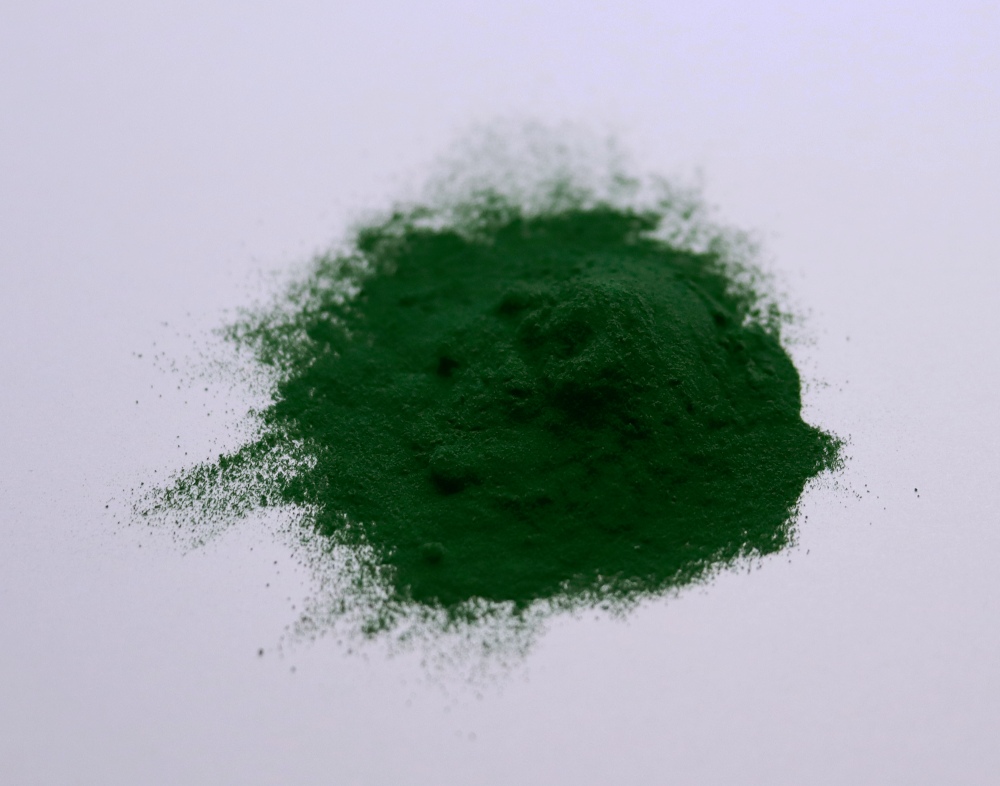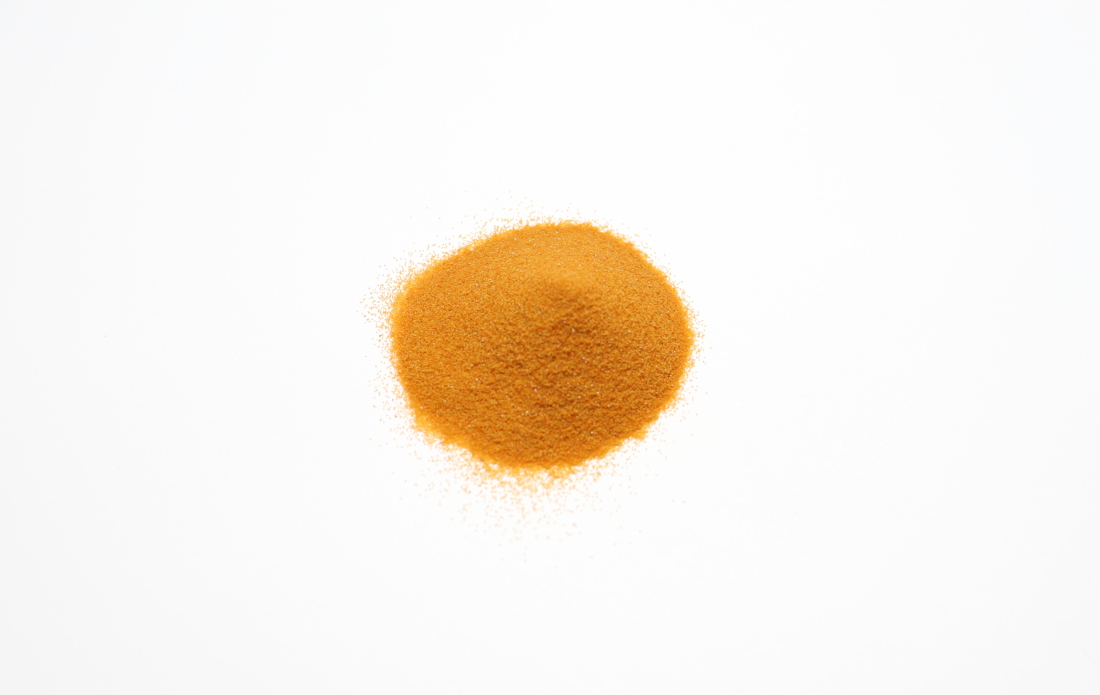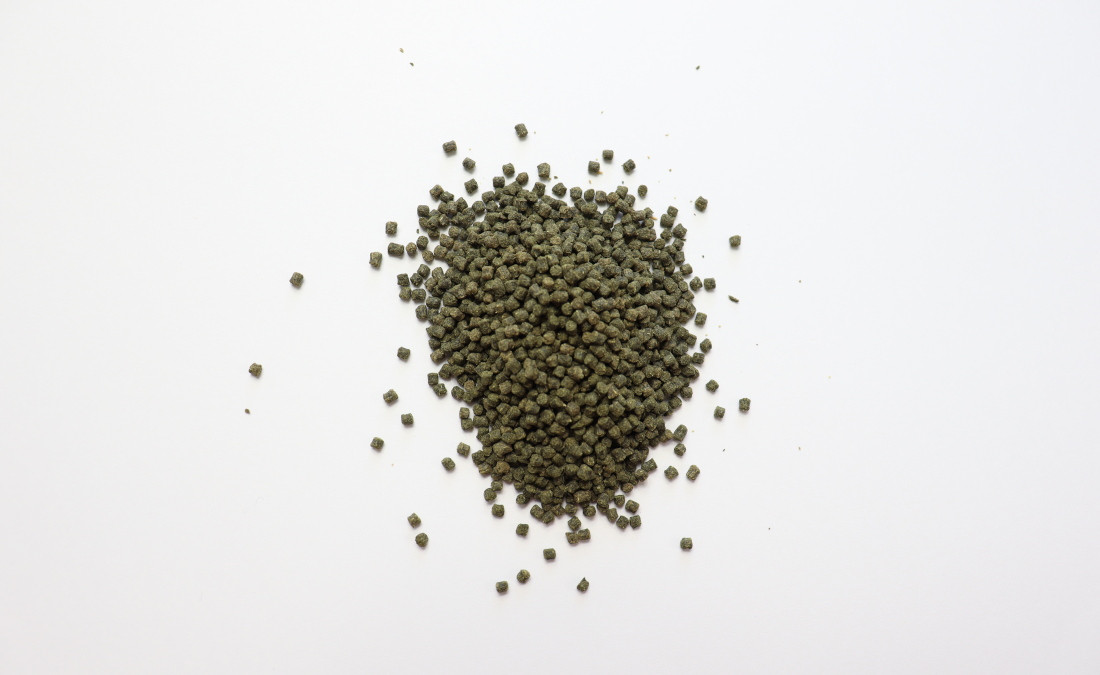Guide
Feeding Triops: How to feed the primeval crustaceans correctly
In Triops breeding, the question of the right feeding and the optimal food is right at the top. Not only for beginners but also for advanced breeders it is not always easy to judge how, what, when and how much to feed. “What do Triops eat? What should I feed my Triops? When and how often should I feed? What food should I buy to feed my Triops?” Even professionals can’t always answer these questions perfectly, as there are simply many factors involved. It mostly depends on the Triops species and the size of the little animals. One of the most important pieces of advice when it comes to feeding is that you should not overfeed the Triops. The rule of thumb is: less is more! I will explain why in more detail in the article. You will learn here how to feed the Triops in the first days of life until they reach sexual maturity. You will also learn how a varied and protein-rich diet keeps your Triops healthy and vital and how you can optimally feed Triops.
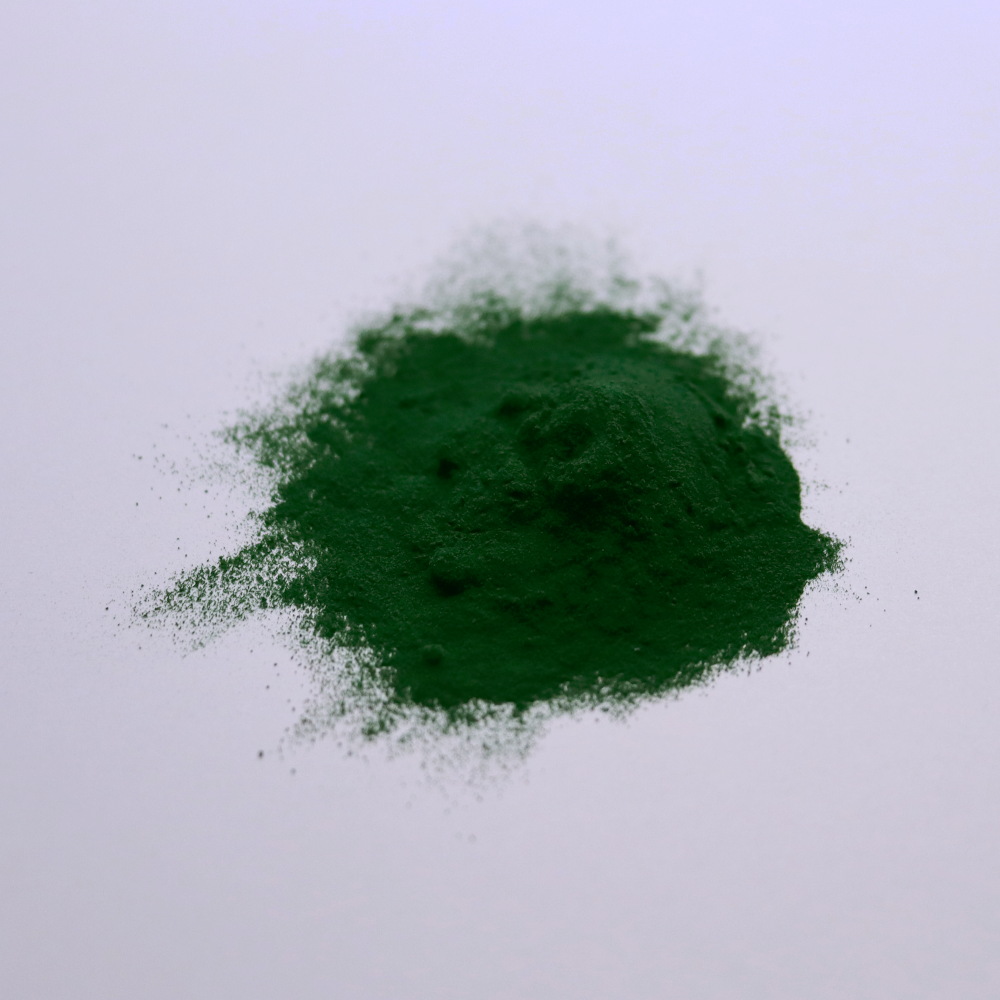
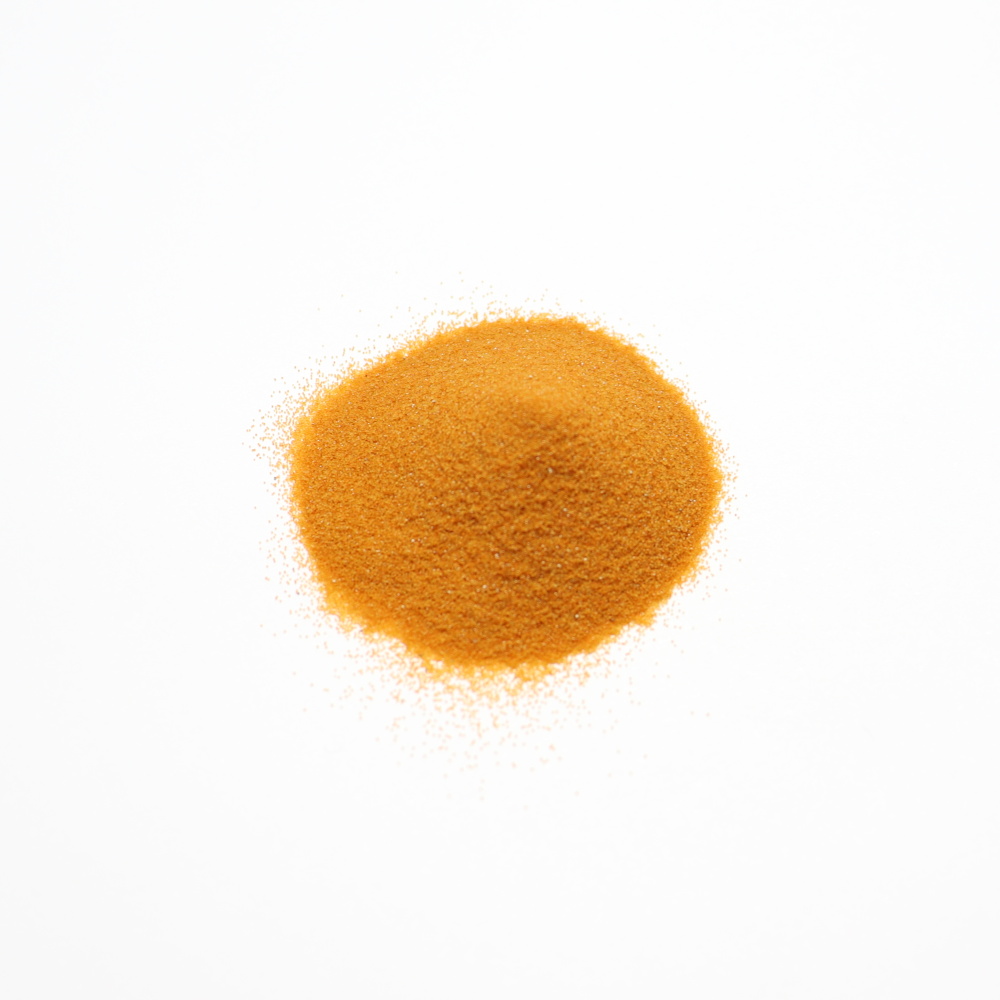
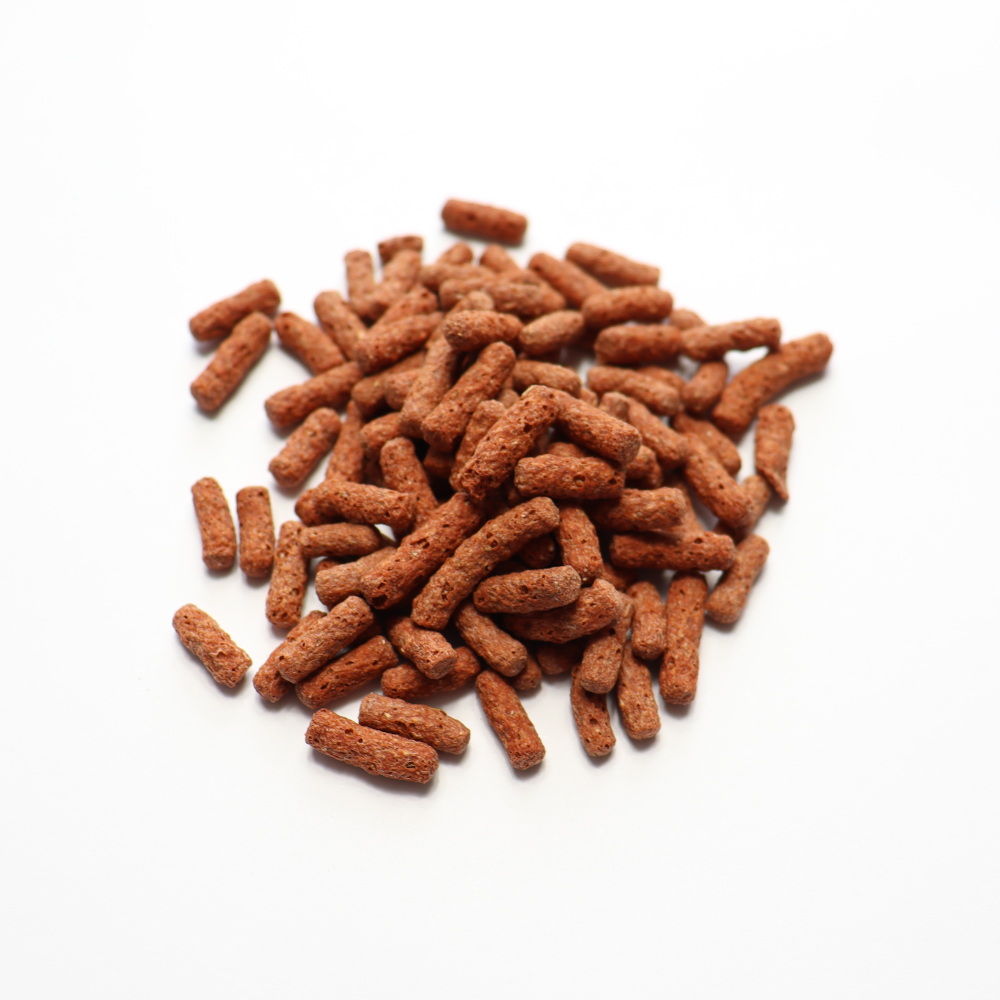
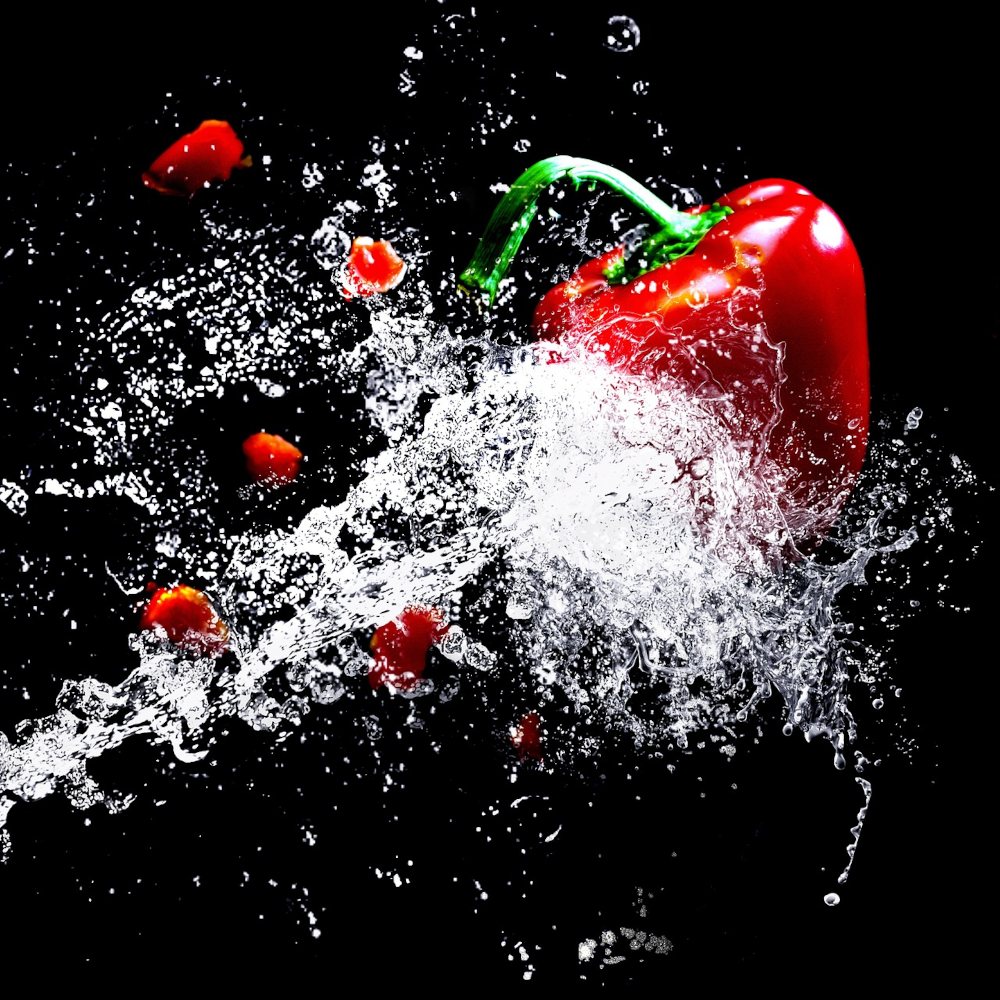
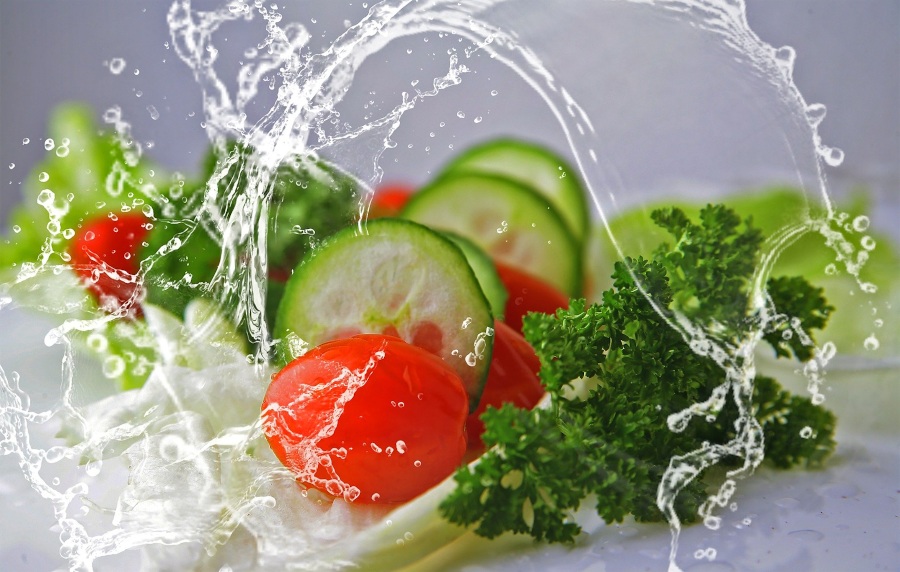
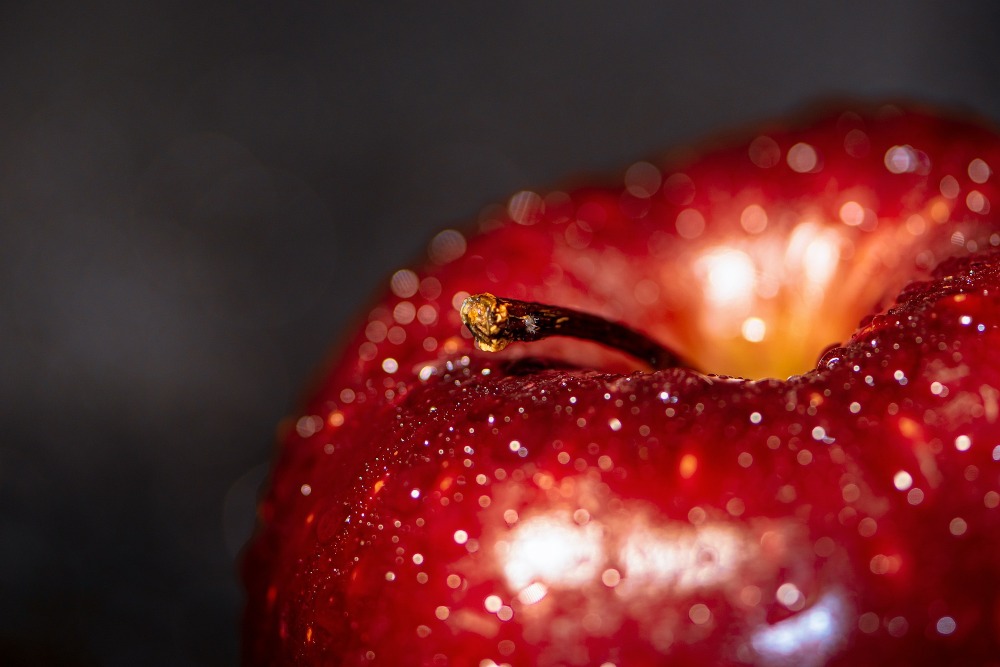
Feeding Triops: Triops are omnivores
Triops are known to be omnivorous. All day long they nibble on plants or dig in the sand looking for food. They are also known for their cannibalism. Especially when the stocking in the aquarium gets too big, they like to eat their sisters and brothers. Even if there is not enough protein-rich food, the larger Triops will eat their smaller and weaker conspecifics. Cannibalism can be counteracted with a protein-rich diet, e.g. in the form of live food such as worms. Triops have a very fast metabolism and this is one of the reasons for their voracity.
Feeding triops: animal or vegetable food?
The origin of the prehistoric crustaceans reveals a lot about their feeding needs. Let’s take a look at the feeding habits of Triops species and how you should feed them, using the two most common Triops species as examples – Triops longicaudatus and Triops cancriformis.
Triops longicaudatus live mainly in desert ponds and feed mainly on insects, but also tadpoles. They do not consume much plant food, as this is relatively scarce in their habitats. For this reason, when feeding Triops longicaudatus, care must be taken to ensure that animal food predominates. A reliable guideline is 60 percent plant food. This can be earthworms or other live food.
Triops cancriformis, on the other hand, need more plant food than the American longicaudatus. You should definitely add plants to the aquarium with every Triops species. Waterweed, duckweed and hornwort are the plants that are excellent for this. You should also feed the Triops with vegetables such as carrots or cucumbers. Here, it is essential to pay attention to a balanced amount in order to avoid overfeeding!
Overfeeding: These are the fatal consequences!
In my early days as a breeder, I regularly made the mistake of overfeeding my Triops. We humans are socially and solidarily inclined and therefore don’t want our animals to starve. So I thought to myself, I have to feed my Triops properly so that they don’t starve. The result was that I meant too well, overdid it and ended up overfeeding them.
If there is an excess of food, the food remains at the bottom of the aquarium, decays and releases dangerous pollutants such as nitrite and nitrate. The water values deteriorate rapidly and this means certain death for the Triops. Inexperienced breeders tend to overfeed their Triops. It must be said quite clearly here:
Triops are more likely to die from overfeeding than from starvation due to too little food!
You should feed your Triops, but not overfeed them. Don’t worry, the Triops will not starve if you feed them a little less. Overfeeding affects the water in the aquarium and the delicate ecosystem. The food should not lie on the bottom for too long. As a rule of thumb, if the food is not eaten within an hour, it should be removed from the aquarium.
When eating spoiled food, the Triops can suffer severe digestive disorders.
What do Triops eat? Food types at a glance
Depending on the stage they are in, Triops require different types of food. In the first three days, the nauplii are not fed at all, as they feed on their yolk sac. From three days onwards, the nauplii should be fed very fine food such as spirulina powder or chlorella powder. After four days of feeding with spirulina or chlorella, the Triops are fed with decapsulated Artemia eggs for a transitional period of ten days, as they are still too small for solid food. Only then are they fed solid food such as granulated food or live food.
Below I explain the most common types of food as well as the food dosage for the different growth stages of Triops.
Young animal food: spirulina powder and chlorella powder
The Triops are not fed for the first two to three days. Since they do not have teeth to reduce food in the first days of life, they feed through the yolk sac. Triops obtain food from the nutrients and bacteria contained in the water. Triops should only be fed for the first time after 48 hours. Spirulina algae powder and chlorella powder are best suited for young triops.
The Spirulina algae powder provides the Triops with optimal nutrients in the first days of life. It contains approx. 60 percent protein and carbohydrates and a fat content of ten percent and is ideal for young triops.
How long and how often to feed?
The Triops are fed the fine juvenile food (Spirulina algae powder) over a period of four days. It is fed three times a day. A toothpick tip of the spirulina powder is sufficient for this. The spirulina powder is diluted with water in a test tube and added to the breeding tank with the pipette.
Transitional food: Decapsulated Artemia eggs
After four days of feeding with the Spirulina algae powder or the Chlorella powder, one should not immediately switch to solid food. Since solid food is too big for the Triops and the Spirulina powder is no longer sufficient food, the primeval crabs get hungry and increased cannibalism occurs. For this reason, decapsulated Artemia eggs are suitable for a transitional period of ten days. They have a higher nutritional value than spirulina powder, but are smaller and more digestible than granulated food, which is used as solid food and main food from about 14 days. Decapsulated Artemia eggs are rich in vitamins, high-quality protein and omega-3 fatty acids.
How long and how often to feed?
Decapsulated Artemia eggs are given over a period of ten days. They should be fed to the Triops three times a day. One to two toothpick tips are sufficient. In contrast to feeding with spirulina powder, decapsulated Artemia eggs are given undiluted.
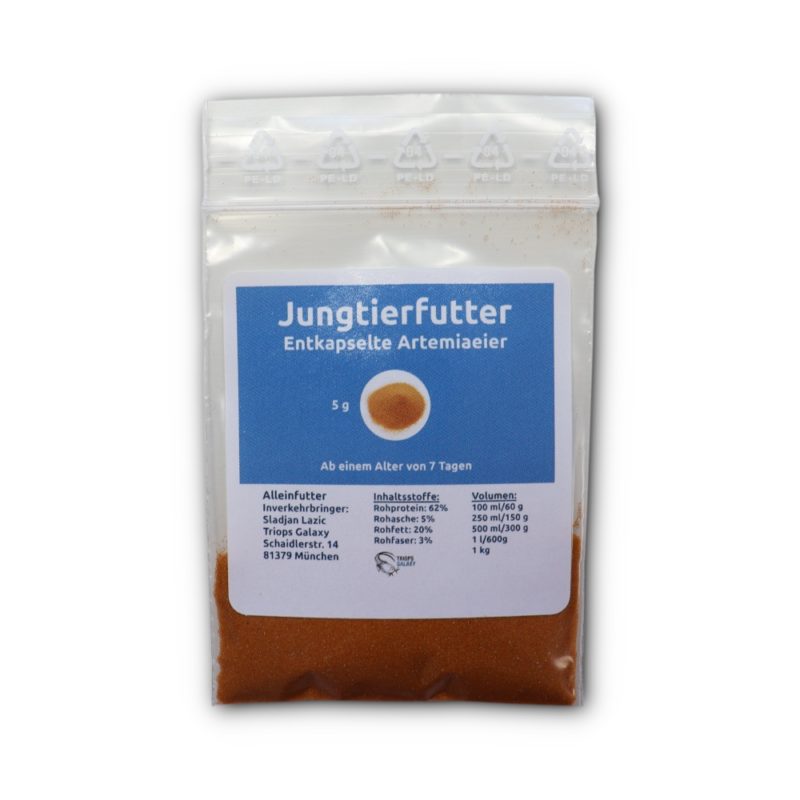
🦐 Triops juvenile food, decapsulated Artemia eggs, 5 gram 🦐
Staple food / Adult food
Granules
Food sticks, granulated food and pellets are best suited as adult and staple food. They are predominantly round and granular foods, available as both sinking and floating foods. The Triops Galaxy sets come with valuable food sticks.
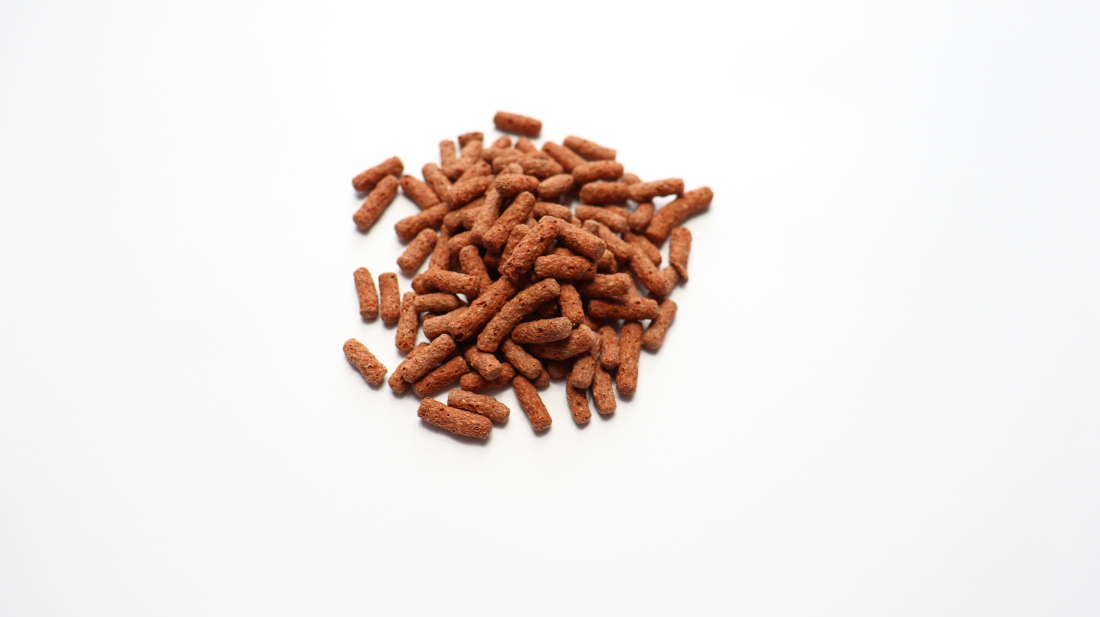
How long and how often to feed?
Adult Triops should be fed between three and four times a day. It is best to feed in the morning, at noon and in the evening and give one stick of food per animal. If you cannot feed the Triops due to your job, you can use an automatic feeder. You can also use this when you are on holiday.
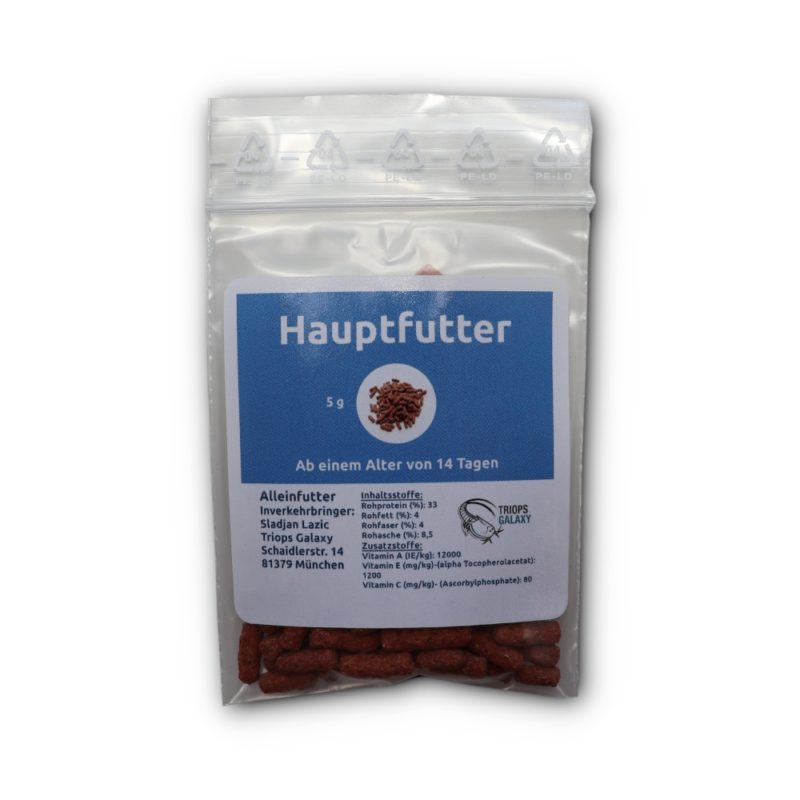
🦐 Triops staple food, floating food sticks, 5 grams 🦐
Food tablets
Food tablets are also excellent for Triops. These sink quickly to the bottom and do not rot so quickly. There is a large selection from various manufacturers in the shops. I can highly recommend catfish tablets.
Live food
Feeding live food reduces cannibalism and provides the Triops with valuable proteins. In order to prolong the life of the primeval crabs and to promote the natural hunting instinct of the little ones, you should regularly feed the Triops with it. The first choice is earthworms or caterpillars, which you can collect yourself in the wild. If you have the time and the inclination, you can pond them yourself outside. You will need a very fine landing net and a container to store the live animals.
This live food is suitable for Triops:
- Silkworm dolls
- Mealworms
- Mosquito larvae (black, red, white)
- Bosmids
- Ciliates
- Cyclops (jumping fish)
- Daphnia (water fleas).
The same applies when feeding live food: do not feed too much! You should not give the primeval crabs granulated food and live food at the same time, as they cannot eat it all and the food goes bad and the water quality deteriorates. An earthworm should not be bigger than the Triops, as it can never eat it.
Fruit and vegetables
A balanced diet for Triops naturally includes fruit and vegetables. Basically, you can feed all kinds of fruit and vegetables, as long as you don’t overdo it. Be especially careful with fruit because of the fructose, too much of it will harm the animals.

The following vegetables can be given raw:
- Broccoli
- Carrots
- Garlic
- Cabbage turnip
- Red cabbage
- Celery
- Spinach
- Courgette.
These types of fruit can also be given to the Triops:
- Bananas
- Strawberries
- Cherries
- Mandarins
- Oranges
- Peaches
- Grapes
- Apples.
You can also give the primeval crayfish pieces of boiled egg or raw bacon. Always remember that anything that is not eaten within an hour must be removed from the aquarium so that the water values do not tip over.
Feeding Triops – Conclusion
When feeding Triops, each breeder must gather his own experience and find the right measure. The feeding tips described here are guidelines and serve as orientation. Please also have a look at my breeding diaries, where I have described in detail how to feed Triops. Have a look at the Triops Galaxy guide, where you will find a lot of useful information about prehistoric crustaceans.
Have fun and success with your breedings!
- Introduction to the basics of ichthyology - 28. April 2024
- Palaeontology: Fossil traces from China point to raptors - 27. April 2024
- 130 stranded whales rescued in Australia - 26. April 2024
